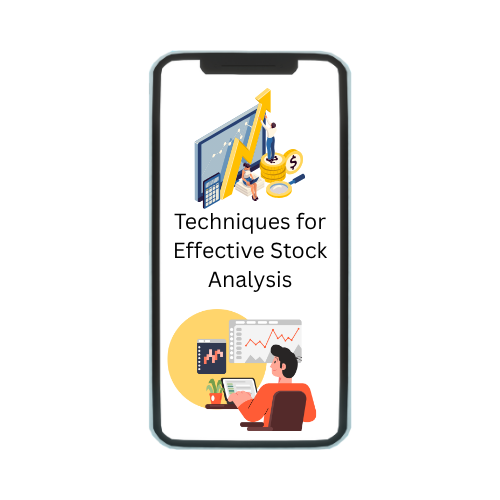While most investors have faced the brunt of volatility, those with well-diversified portfolios have managed to minimize their losses. Today, we will talk about investors who didn’t pay enough attention to diversification and have a skewed portfolio of market investments. With their funds stuck in the markets, is it too late for them to diversify now? Definitely not. In this article, we will share some ways in which you can diversify your existing portfolio and reduce the overall portfolio risks by making smart investment decisions even in the time of market volatility.
Diversification In 2021
If you ever had any doubts about the benefits of a diversified investment portfolio, then there couldn’t be a better time to put those doubts to rest other than the current market conditions of extreme volatility. Stock prices are responding to various developments on COVID-19 and economic packages introduced by governments in various ways. As the situation unfolds and we learn more about the impact of the pandemic on the global economy, one thing is certain – businesses will be facing difficult times ahead. Before we talk about how to diversify, we would like to talk about the difference between diversification and hedging. This is important because during conditions like the current pandemic, while diversification helps you reduce the risks, hedging can be a counterproductive ploy. To understand this, let’s look at the concept of correlation.
Correlation
Correlation means how two variables are related. In investing, correlation means two securities that move either in the same direction or in the opposite direction at the same time.
How Does Correlation Apply to Diversification?
When you diversify your investments, you must try to invest in securities that have no correlation with each other. That means even if one security falls, it does not impact the returns of other investments in your portfolio.
Many investors confuse diversification with hedging where investments are made so that securities have a negative correlation with each other. While hedging is beneficial too, during times like these when the overall economy is under duress, hedging can be risky.
This is because securities tend to become more correlated than normal. So, in a normal market if two securities have a negative correlation, then they might become positively correlated during such times disrupting your hedging strategy. Hence, to reduce risks, ensure that you diversify by investing in securities with no correlation.
Here Are Some Tips To Help You Diversify During The Current Market Conditions:
Tip #1 Avoid Investing a Lump Sum Amount
Now that we are clear about diversification, the first thing you need to do is avoid investing in a lump sum in an effort to quickly diversify your existing portfolio. Although low market prices might seem lucrative and tempt you to invest in a lump sum, assuming that the markets have hit rock bottom can be counterproductive. The markets are highly unpredictable since these are unprecedented times. Therefore, if you try to time the markets and invest in a lumpsum and the markets fall further, you could suffer huge losses. Even if you have a lump sum amount to invest, you must invest gradually while observing how the situation evolves.
Tip #2 Invest in Mutual Funds via Systematic Investment Plans
SIP or Systematic Investment Plans are inherently designed for volatile markets. They ensure that you invest a fixed amount at regular intervals regardless of the market conditions. Hence, over time, you benefit from Rupee Cost Averaging as your average purchase price comes down and you have a better opportunity to earn handsome gains. It also saves you from entering the markets at the wrong time. SIPs can be a great way to diversify your portfolio without the risk of entering the market at the wrong time. With regular investments, even if the markets fall further, you benefit since more units are allotted to you for the same amount. With a long-term investment horizon, this could mean handsome gains.
Tip # 3 Invest in Equities For A Longer Horizon
So, we assume that you are clear about investing in securities having a low correlation with your existing portfolio, avoiding lump sum investments, and considering SIPs. The next important aspect of diversification during market volatility is the investment horizon.
Volatile markets are dangerous for short-term investors. If you look at the past performance of the markets, you will see that while markets have always been volatile, they have recovered from crashes and huge correction phases. While the past performance is not a guarantee of the future performance, the inherent nature of the economy and markets is to bounce back. Also, with a pandemic, markets can take some time before they recover. Therefore, a long-term investment strategy is your best bet now.
Tip #4 Diversify in Different Ways
In investment circles, we call it diversifying a diversified portfolio. Let’s say that you decide to invest 40% of your portfolio into equity mutual funds, 30% into debt funds, 20% in stocks, and 10% in term deposits (just a vague portfolio NOT a recommendation). So, this is diversification level 1. Based on your existing portfolio, choose one of the following ways of diversification:
Equity Funds diversified across market capitalizations
Prudence dictates that you invest in companies with strong fundamentals when the markets are volatile. But, if your portfolio is already heavily invested in large-cap stocks or blue-chip stocks, then you must look at a fund that offers good quality stocks in the mid-cap and/or small-cap segment.
Equity Funds diversified across geographies
This is highly relevant in the current scenario. In a pandemic, some areas are worse-affected than the others. This means that businesses that have a base in those areas or who depend on the area for materials, labor, or any other aspect necessary for its operations, will suffer heavy losses. In fact, some businesses might find it difficult to recover at all! On the other hand, areas that are not affected so badly will have businesses that will recover quickly and might even make good profits. Hence, try to look for funds that invest in companies spread across the length and breadth of the country so that your investment portfolio doesn’t get impacted due to geographical concentration.
Equity Funds diversified across various market sectors
Currently, most sectors are badly hit. While you might feel tempted to speculate, a better way to approach it would be to ensure that you invest across most essential services sectors like banking, insurance, health, etc. Look for sectors that have been strong and have the resilience to recover quickly once the economy turns around.
Diversify Your Debt Investments
Usually, most investors tend to focus more on equity when it comes to diversification. With debt investments, they either choose a debt fund that is secure or invest directly in some debt instruments without thinking about the correlation between them. In the current market and economy conditions, it is important to diversify your debt investments too. There are various debt funds available that can be used to instil the required amount of diversification in the debt portion of your portfolio like income funds, dynamic bond funds, liquid funds, credit opportunities funds, short-term funds, ultra-short-term funds, gilt funds, fixed maturity plans, etc. Analyze your debt portfolio and invest in funds that have no correlation with your existing investments.
Summing Up
We understand the fear that most investors are going through. However, redeeming your investments during such times is not recommended. Instead, we would urge you to continue investing in a strategic manner. Remember, panicking would lead to an error in judgment and eventually to losses. If you believe that the markets are volatile and that they will recover sooner or later and you can stay invested, then avoid all urges to sell your investments and book the loss. Instead, focus on creating a diversified portfolio that can benefit from the current market conditions and generate amazing returns when the markets recover. One last thing – remember the three pillars of a successful investor and never lose sight of your financial goals, risk tolerance, and investment horizon. Whether it is about redeeming investments or entering the markets because they are at rock bottom, ensure that you stick with pillars. We hope that this article helps you create an investment strategy that works for you in the long run.






